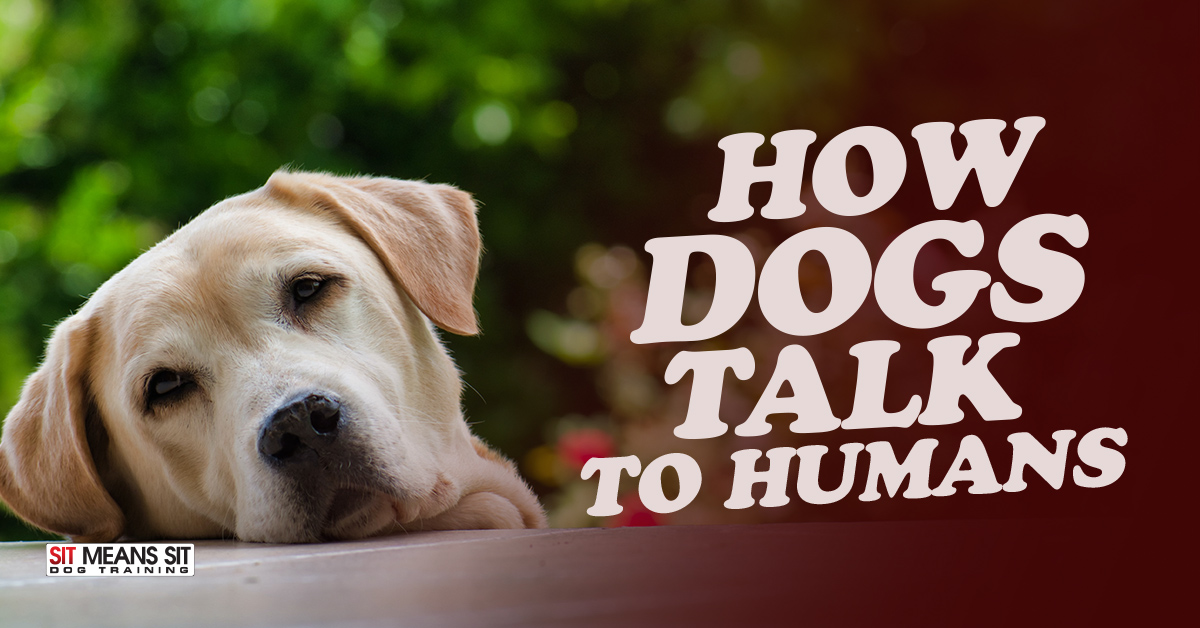
How Dogs Talk to Humans
Dogs communicate with us all day long, whether we know it or not. In fact, a recent study detailed that there are 19 different signals that dogs use to talk to us. These signals are referred to as “referential signaling” which for example, is the way babies communicate with their parents.
As dog owners, the key is to understand the gestures a dog is using and reward the dog with a desired response. Dogs communicate mostly through body language, and only use vocalization if needed. We have put together a list of non-verbal cues dogs use to get our attention.
Tail Language
Just because a dog is wagging his tail doesn’t mean he’s happy. If this is a dog you’re not familiar with, it’s possible that the tail wag is not signaling for you to pet the dog. Pay attention to the dog’s ears, if they’re down and not perking up the dog may be signaling that he’s not comfortable. Also, pay attention to the rest of the dog’s body for stiffness.
- A curled tail usually means a relaxed dog.
- A straight, stiff tail means a dog is tracking something closely.
- A lower held or tucked tail means fear and submission.
Ear Language
Dog ears are a great signal to tell how your dog is feeling. Perky ears show us that a dog is very interested in what’s to come next and are highly focused. Droopy ears are a sign of submission, while ears pinned back mean the dog is unhappy and uncomfortable.
Eye Language
Sad puppy eyes are the most apparent way dogs use their eyes, and most effective. On the other hand, your dog may close his eyes in pleasure when receiving an enjoyable belly rub.
Fun fact, when you can see the whites of a dog’s eyes, they are on high alert and want space.
An unblinking dog may be showing signs of aggression, but most likely when your dog is staring at you, it’s just to get your attention. When avoiding eye contact altogether, your dog is uncomfortable and is again showing signs of submission.
Mouth Language
The best sight is when you see your dog smiling at you. I’m sure you question whether or not he is actually smiling or conjuring up some plan to destroy your shoes later. A dog’s smile is a sign of content by seeing ears forward and relaxed eyes. In contrast, when dogs bare their teeth, this is a sign of unhappiness and potentially both fear and aggression.
What Does A Dog’s Head Tilt Mean?
Dogs tilt their heads because they’re listening much more intently. Think of your dog’s ears as an antenna. When something startles them, or they hear a sound they haven’t heard before, they’ll tilt their head to readjust their antenna towards the sound. This behavior is inherently built into dogs and happens instinctually.
What are your favorite signals your four-legged companion communicates with you? Personally, I love when my dog’s ears are upright and perky.
